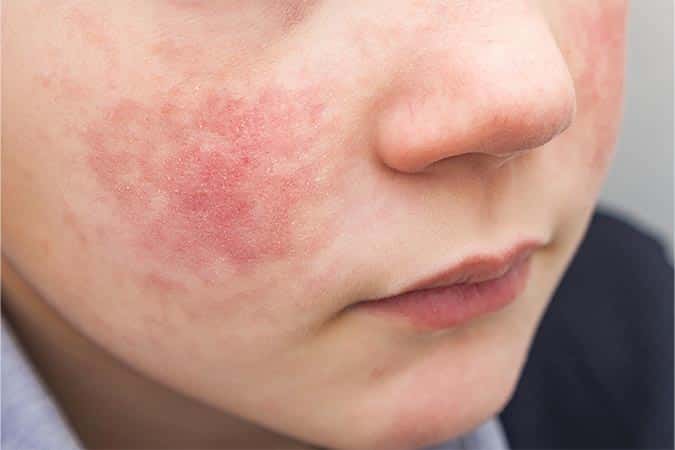What are Genodermatoses?
Genodermatoses are genetic skin disorders that often develop at birth or early in life. These conditions can be serious, and can severely impact the patient’s life. There are about 400 different kinds of genodermatoses. Many of them can be categorized as a single-gene disorder or a polygenic disorder. Some of the most common include:
Single Gene Disorders
- Porphyria: Sensitivity to sunlight, skin redness, and swelling, blisters, itching, etc.
- Epidermolysis bullosa: Blistering of the skin and mucous membranes.
- Neurofibromatosis: Cafe au lait macules and rubbery skin nodules.
- Tuberous Sclerosis: White spots or patches, pink papules near the nose and nails, and skin-colored plaques on the forehead or trunk. Facial angiofibromas can now be treated with Hyftor (sirolimus) topical gel 0.2% for individuals 6 years and older.
- Epidermolysis bullosa: Blistering of the skin and mucous membranes.
- Ichthyosis: Dry, thick, scaly skin.
- Fabry disease: small, dark red spots (angiokeratomas), decreased ability to sweat, etc.
- Ectodermal dysplasia: Abnormal development of the skin, hair, teeth, and/or sweat glands.
- Incontinentia pigmenti: Blistering and rash, wart-like skin growths, and light or brown patches of skin.
This is just a small list of genodermatoses and does not cover all possible genetic skin disorders.
Who is a Good Candidate for Genodermatoses Treatment?
Different genodermatoses present with unique signs and symptoms, depending on the skin disorder. This is why thorough assessment and testing is required to properly diagnose the skin disorder. If your child is exhibiting any unusual skin symptoms, especially when other organ systems are being impacted by disease, contact our office for a consultation.
In some cases, there are red flags that doctors can recognize to diagnose a genetic skin disorder. These may include a certain sign or symptom of the skin present at birth that is associated with a skin disorder later in life. If you notice that your infant is exhibiting abnormal skin appearance, contact a dermatologist for assessment.
What to Expect During Genodermatoses Treatment?
Diagnosis of genodermatoses can sometimes be challenging, due to their rarity and diversity. Diagnosis is usually achieved through a combination of physical exams, clinical and family history examination, lab tests, and consultation with multiple medical specialists. The treatment that is prescribed may differ depending on the diagnosis and may consist of different drug therapies, creams, and ointments, or lifestyle and home remedies. Our team of dermatologists will work closely with you to thoroughly examine your child’s skin and symptoms, as well as to conduct the proper testing to diagnose the skin condition. We work closely with pediatric geneticists and genetic counselors to arrive at a consensus. Following diagnosis, a personalized treatment plan will be created to lessen and control symptoms.
Schedule a Consultation
If you are concerned regarding the appearance of your child’s skin or if they are exhibiting symptoms such as painful skin, rash, blistering, or more, contact HMGS Dermatology today. Our team will assist you in scheduling an assessment with one of our skilled Board Certified Pediatric Dermatologists so that a proper diagnosis can be made.

Get Started With A Visit!
Fill out the form below and we will reach out to you shortly to schedule an appointment.